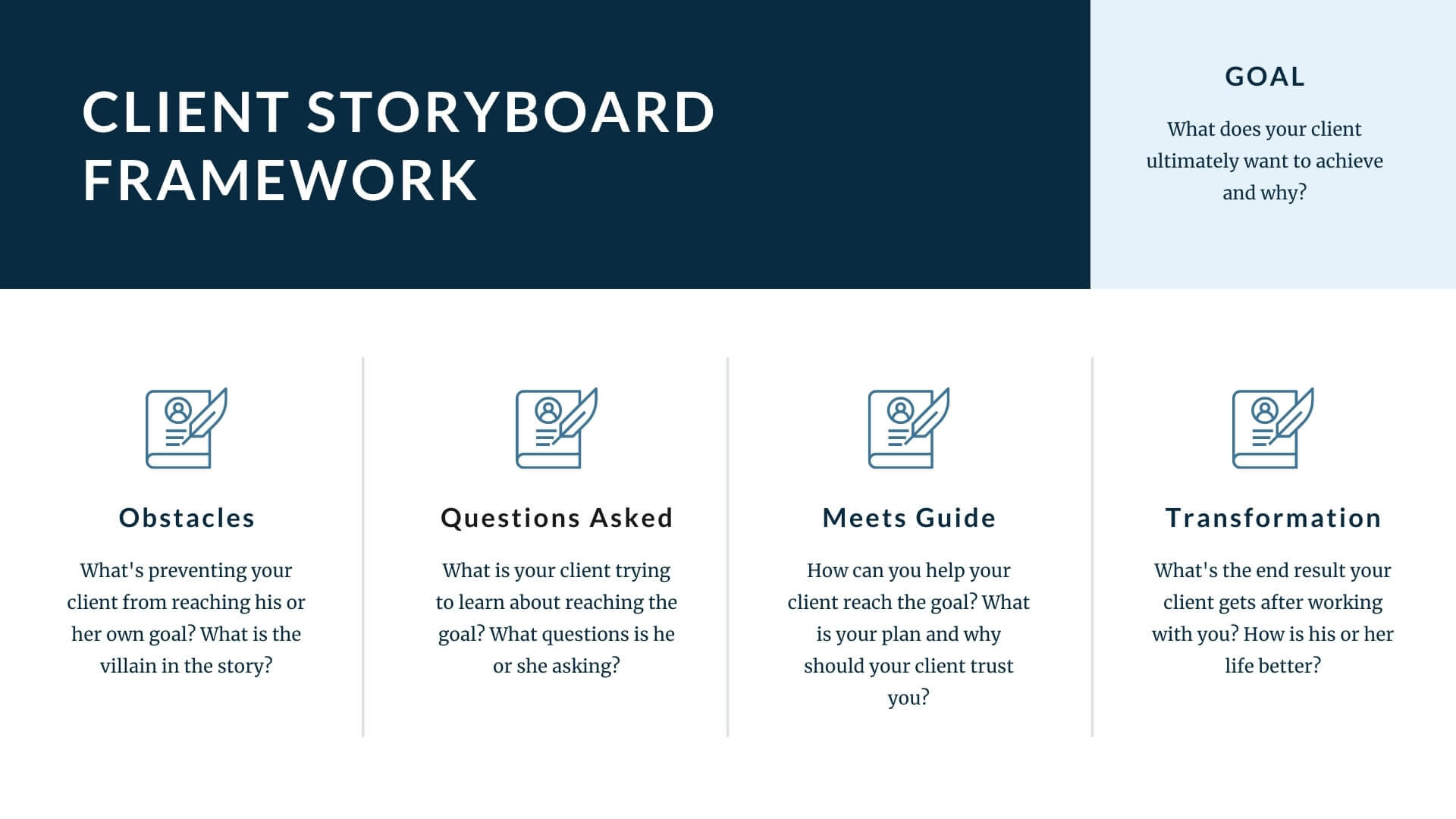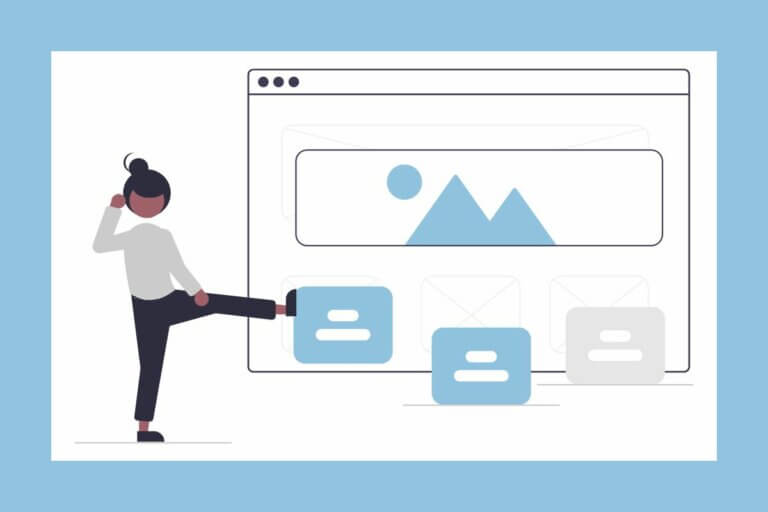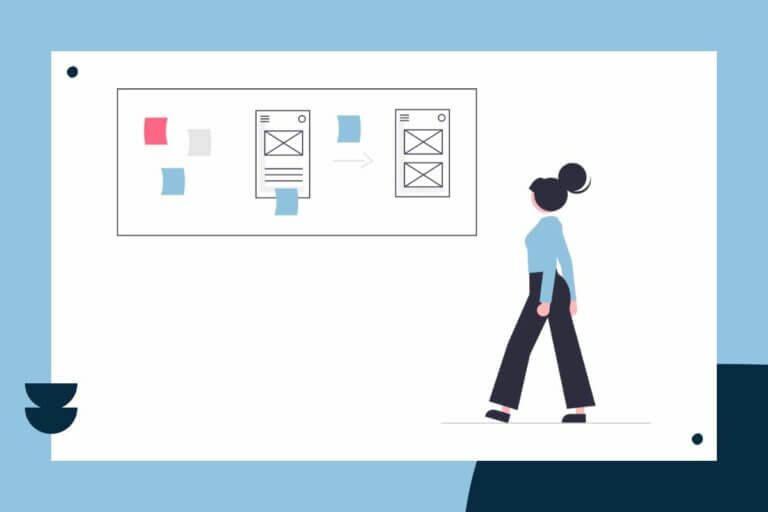Telling Stories
We all love a good story. Stories draw us in. Whether it’s your favorite movie, book or commercial, it’s the story they tell that tugs at our heart, pumps our adrenaline, or soothes our soul. We remember good stories, like good friends. We may forget the details, but the feelings remain and we feel connected somehow to them.
I believe your website is the perfect place to tell stories. Now, I’m not talking about fiction, but communicating with your audience using a storytelling framework. By seeing your buyer’s journey as a story, you can deliver your message and your value in the same way our favorite stories connect with us. It’s almost like giving a gift to your audience – inviting them in to connect with you.
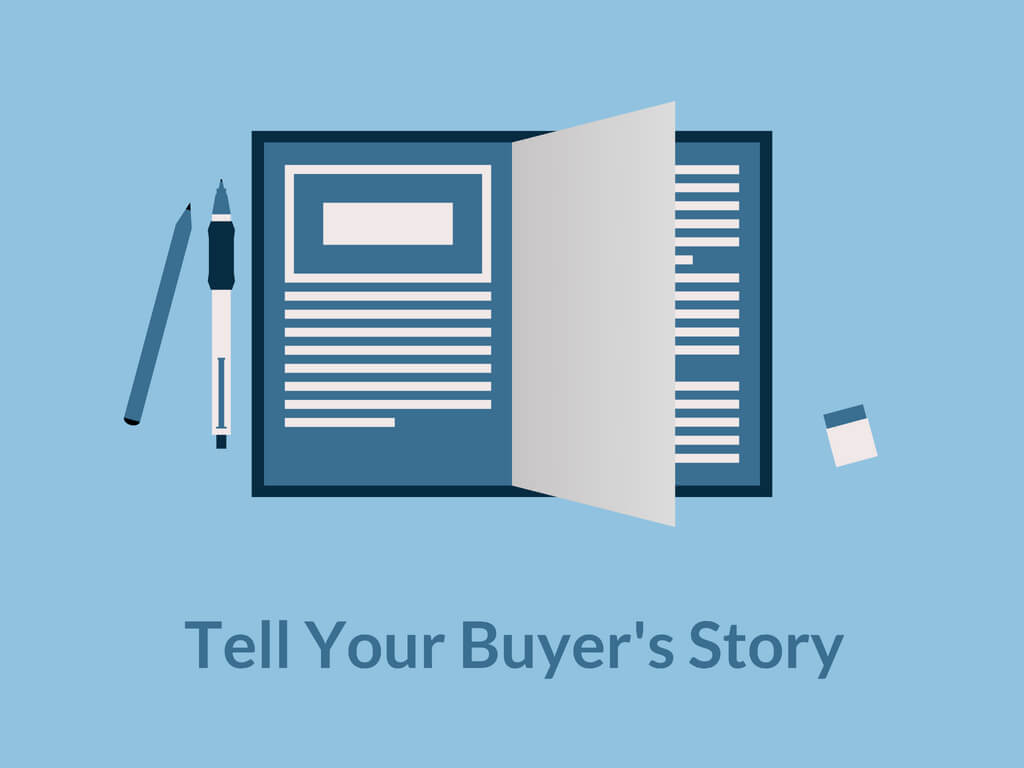
How Stories Work
To help you understand this idea, I’m going to follow a framework from Kyle Gray. I’m a big fan of Kyle Gray over at The Story Engine. He’s a master of storytelling and has a knack for breaking things down into small, digestible bites. What he tell us is that most good stories contain several common elements.
Incident
Something happens to change the status quo. For example, the Star Ship Enterprise embarks on a new mission.
Complication
Things start to get rough. There are obstacles to get through, and each obstacle becomes increasingly difficult. For example, the Enterprise notices a strange object approaching the ship.
Crisis
The complication crescendos into some kind of a do or die situation. The ship is under attack and sustaining heavy damage.
Climax
The star of the story needs to make a decision, often needing to decide between the least bad of two choices, or giving up something good in exchange for another. Captain Picard needs to decide if they should risk a daredevil defense to save the ship. If it fails, the ship could break apart.
Resolution
The result of the decision. Sometimes it’s a happy ending – sometimes it’s not. In Star Trek, the daredevil move almost always succeeds. The Enterprise survives to embark on a new adventure.
The Hero’s Journey
Now, we can take this framework one step further. Often, our favorite stories have heroes. Think of your favorite hero and see if that story matches this journey. Put yourself in your hero’s shoes. As Kyle Gray explains, the typical journey goes something like this:
The Adventure Begins
Your hero embarks on some type of journey. This could be literal, such as traveling somewhere, or metaphorical, when your hero is seeking some type of personal transformation. This step is the call to adventure, or the incident.
Obstacles
Then, while on the journey, the hero encounters a series of obstacles to overcome, but also finds treasures along the way. Usually, these treasures help the hero continue along the journey. This step is the complication.
For example, think of Star Trek and the all the narrow misses the Enterprise has while on its mission. They start small, like a passing Klingon Ship, but the crew easily avoids the mess. These incidents become increasingly difficult as the adventure continues.
Crisis and Climax
At some point, the hero runs into such a huge challenge, the hero almost gives up, or simply can’t go any further. Just when things look really dire, the hero finds the Golden Ticket – the magical treasure that gives the hero the power to save the day or to complete his or her journey. Sometimes, the hero must decide if the Golden Ticket is indeed worth the cost to get it or to use it. This step is the crisis and the climax.
Think again about your favorite hero stories. For example, the Enterprise must use the uncharted worm hole to reach and battle the enemy ship to save the Federation.
Resolution
Finally, the hero decides to use the Golden Ticket and it works (or it doesn’t depending on the story). Now, the transformation is complete and the problem is solved. The hero is happy, life is better, and the hero is now ready for the next adventure. The Enterprise successfully navigated the worm hole and defeated the enemy ship.
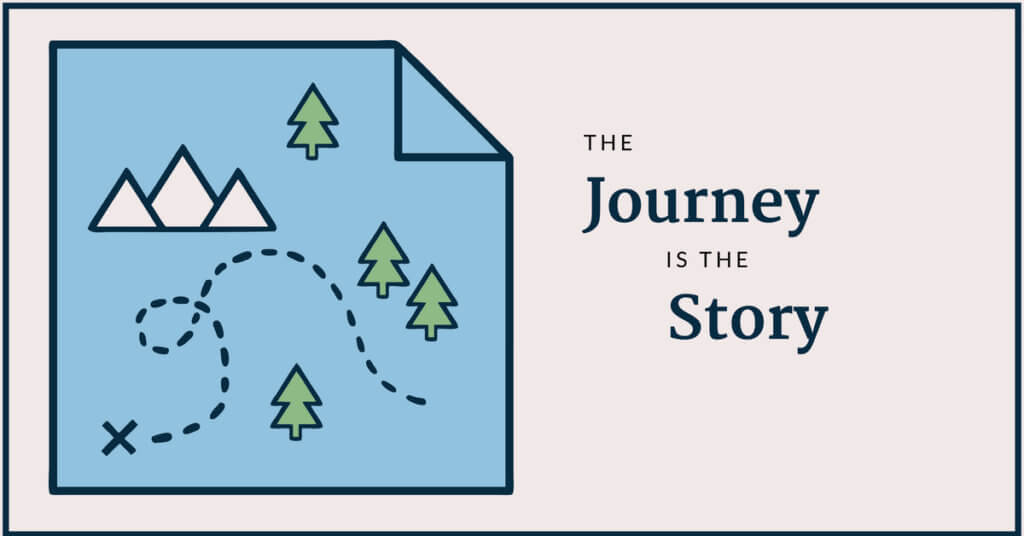
Tell Your Buyer’s Story
Now, let’s start to think about how we can use these frameworks on our websites and for our content. To do this, we can think about our buyer’s journey in the context of the storytelling framework. Hopefully you’ve already worked out your buyer’s journey, which is the path your client takes that brings them to you to get help. If you haven’t mapped this out yet, I highly recommend you do so.
Briefly, the typical buyer’s journey looks something like this:
The Problem
Your buyer has a problem or wants to accomplish something. So your buyer sets out on a quest to get this done. This is the incident of your story.
Obstacles and Confusion
Not long after beginning this quest, your buyer starts running into roadblocks and obstacles that prevent her from reaching her goal. Your buyer gets confused and doesn’t know how to proceed. So, your buyer begins to look for help and starts asking questions. This is the complication of your story.
Getting Stuck
Finally, your buyer needs to make a big decision and is feeling stuck. Your buyer may be frantically looking for solutions and needs to choose between your offering and another one, or maybe do nothing at all. Your buyer has met you, a Guide offering a Golden Ticket, but needs to decide which path to take. This is the crisis.
Taking Action
Now, your buyer needs to take action to resolve the conflict. Your content can encourage the buyer to take action – to make those tough decisions about her future. Can you fix your buyer’s problem or help your buyer reach his goal? It’s absolutely crucial that you’re clear about this. You need to know exactly what problems you solve for your buyer, so you can offer a clear path to success. This is the climax.
Decision
Your buyer chooses the path you provide because you have provided a clear path to accept that offers the rewards or gains your buyer seeks. This is the resolution.
Make Your Client Your Hero
Now, let’s put your client (aka buyer) in the hero’s shoes. Think of yourself not as the hero of your buyer’s journey, but as the Guide who offers the Golden Ticket that empowers your client. Of course your client’s individual story probably may not be that dramatic on its face, but to your client, it may seem dire or like a crisis.
To get started, ask yourself these questions:
What is your client’s adventure?
Think about your buyer’s journey in terms of an adventure and a story. Is your client on a journey to better health or looking for a new career? You can even get more specific. Perhaps your client wants to find the perfect yoga studio or a training course. What is your client’s ultimate goal?
What obstacles does your client run into?
Think about the types of roadblocks your client could encounter. Is there just too much conflicting or complicated information and too many choices? Does your client fear change or not have enough time? Maybe your client is not sure who to trust.
What treasures can your client find to continue with the journey?
Now, think about what types of little goodies would help your client and keep the adventure going. How can you answer the questions your buyer is asking? More importantly, can you provide these goodies until your client is ready to dive in head first?
What is the problem or crisis that is so dire it can put the entire adventure at risk?
This question is tricky, because the pain points can be different for different heroes. But, think about your ideal client and what that pain point might be. For example, your client has tried several health remedies but nothing worked. Now, your client is ready to give up.
You can also think of the crisis as the villain of the story. What is the injustice or external problem that is preventing your client from reaching the goal?
What’s the Golden Ticket you offer that can solve this problem?
You must have a solution that empowers your client to solve the problem. If the client’s journey and your solution don’t align, your client is not going to be tempted by your Golden Ticket.
What is the cost of finding and using this Golden Ticket?
Just like in any good adventure, there’s usually a cost to obtain the Golden Ticket, or a sacrifice to be made. For most of us, the cost of the solution we offer is our fees and prices. Think about this from your client’s perspective, not yours.
How is this cost going to feel to your client? What will your client think he or she is giving up to use the Golden Ticket you offer? For someone like a Realtor, where the home buyer doesn’t pay, you’re going to have use more metaphorical costs. Think about your client’s cost in time or the cost of possible failure.
How will the hero’s life improve when succeeding with the Golden Ticket?
Finally, you need to think about if the cost of your service or product is worth the solution your client will get – from the client’s perspective. Think about what value you offer and how that value weaves into the story. It’s not manipulating at all. You’re just offering your client a solution to a problem he or she can’t solve alone.
Create Your Client Story Board
So far, we’ve looked at how you can use storytelling to describe your client’s journey and to identify how you help your client succeed in his or her journey. But how do you put this all together to help you write your content?
I’ve put together a framework for this purpose that I call The Client Story Board. You can take a look at the framework below.
How to build your Client Story Board:
Now, let’s put together a worksheet to build your Client Story Board. To get started, open up your favorite app or spreadsheet and create 5 columns. Label each column as follows:
- Goal
- Obstacles
- Questions Asked
- Meets Guide With A Plan
- Goal Reached / Transformation
Next, you’re going to answer a series of questions in each column. So make sure you give yourself plenty of space to write in the columns.
You grid will end up looking something like this:
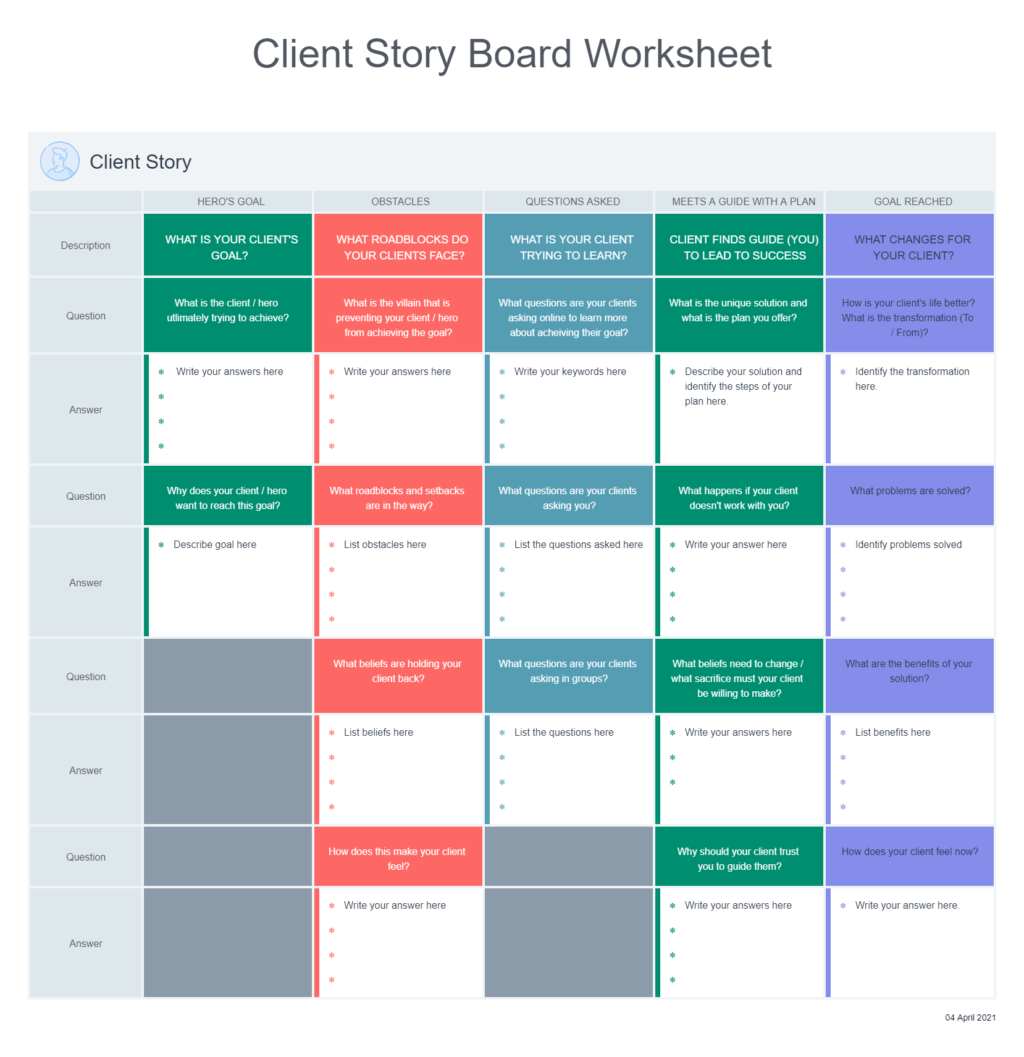 Now let’s get to work and complete your board.
Now let’s get to work and complete your board.
GOAL Column
This column is where you’re going to identify and explain your ideal client’s overarching goal or what they want to achieve.
The questions you want answer here are:
- What does your client ultimately want to achieve?
- Why does the hero want to reach this goal?
You’ll want to keep this goal in mind as you answer the remaining questions for the rest of the Client Story Board.
OBSTACLES Column
This column is where you’ll identify and describe the obstacles and roadblocks your clients face when trying to reach their goals.
The questions you want to answer here are:
- What is the villain of the story? What is the concept, inconvenience, or injustice that’s holding your client back?
- What belief systems are holding your back?
- What are the roadblocks and setbacks your clients face while trying to move forward?
- What beliefs are holding your client back?
- How does all of this make your client feel?
QUESTIONS ASKED Column
In this column you want to identify as best you can what your client / hero is trying to learn about reaching his or her goal.
For this column, you’re going to perform some research to help you better understand your client. This column will be key to helping you prepare content that your client wants to consume!
Keyword Research
You’ll want to do some very basic key work research to identify what questions people are asking online about the goal your client has.
A good tool for doing this is Ubersuggest. It has a free tier, and there are some great free training classes you can take there.
Questions You’re Asked
Dig through correspondence and notes you have with your current and past clients, and identify the questions they ask you.
This is a gold mine of information! Once you compile this list, you have identified what your clients are actually trying to learn.
Questions Asked Elsewhere
What kinds of questions are being asked in places like Facebook Groups, networking groups or user forums you belong to? Try to find the places where your potential clients are hanging out and see what’s being asked there.
MEETS A GUIDE Column
Remember, you want to be the guide your client chooses to help them reach their goal. But you need to offer a clear path to success to build trust with your potential client first.
You also want to describe what it is the client needs to do in order to work with you, and what will happen if he or she doesn’t.
The questions you ask yourself to get started are:
- So what is your plan or Golden Ticket to success? What’s the solution you offer?
- What happens if your client chooses to tackle the problem without your help?
- What is the sacrifice your client needs to make in order to work with you and what belief systems need to change for the client to take action and work with you?
- Why should your potential client trust you to be their guide?
TRANSFORMATION / GOAL REACHED Column
Here, you’re going to describe the end result your client gets from working with you. The questions you want to ask and and answer are:
- What are the benefits the client gets from your solution?
- How is your client’s life better after working with you?
- How does your client feel after working with you?
Now, you can use your client story board as a roadmap for creating your content. By using it as a guide for choosing topics for the content you create, your content will be more focused and more likely to resonate with the people you want to help.
Conclusion
Wow – this was a lengthy blog post. But, I sure hope you found it helpful. To summarize, we’ve discussed:
- How stories work
- Learned what a hero’s journey is
- Discussed how to make your client the hero of the stories you tell
- Learned about the Client Story Board Framework to help you tell your client’s story.
I hope this helps you create better content for your business, and I’d also love to know what part of this article was the most useful for you.
